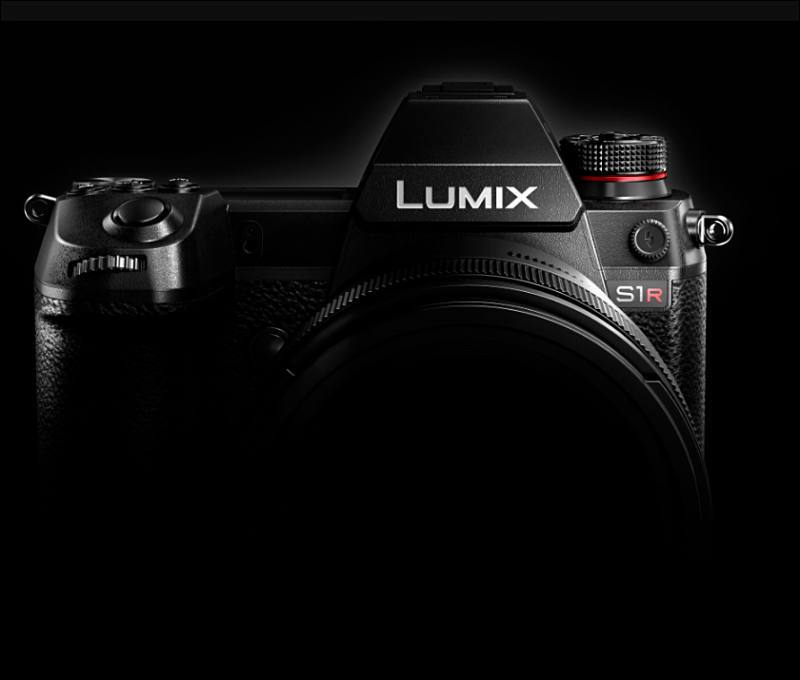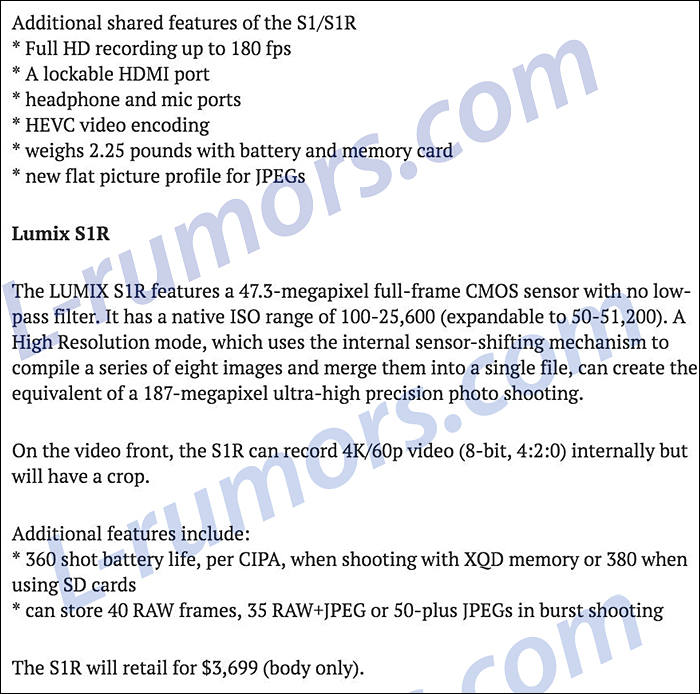
It allows to keep PV going, with more focus towards AI, but keeping be one of the few truly independent places.
-
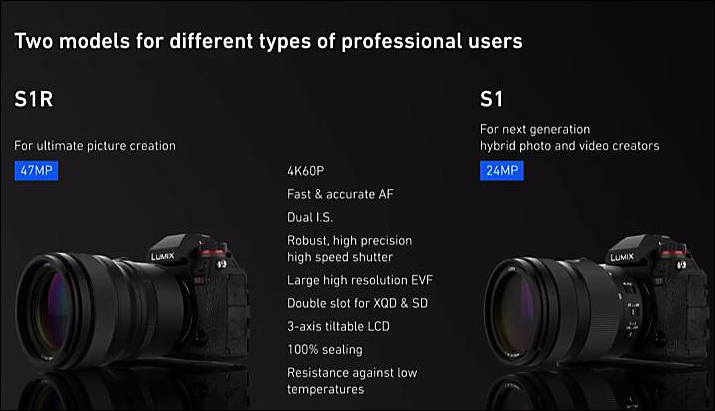
- 47MP Sony made sensor (exactly same as Z7 and A7IIIR)
- 4K 60p/50p video
- Same old DFD contrast only AF
- 3-axis tiltable screen (seems like made for still shooter only)
- Dual slot with one XQD and one SD
- Weatherproof
- EVF has good resolution
- L-mount, partnership with Leica and Sigma
- Top-panel LCD screen that can be backlit
- WB/ISO/EV buttons
- On/Off switch
- Front/rear control dials
- Lockable shooting mode dial, with t PASM modes, C1,2,3 modes and iA mode
- Drive mode dial underneath the shooting mode dial *A / S/C/MF dial which surrounds the AF point button
- On the rear
- Lock button on the left
- Playback button
- Movie record button,
- AF On, AF Joystick
- Quick menu button
- Circular scroll wheel
- Menu/set button
- Back button
- Display button
- Delete button
- Function buttons on the front of the camera, and a 1/2 switch
- V.mode button
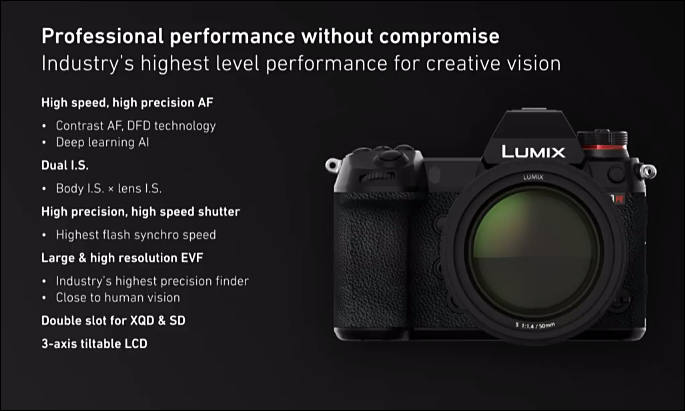
-
PR
Panasonic Corporation has developed two models of its first Digital Single Lens Mirrorless camera with a 35 mm full-frame image sensor, the LUMIX S1R and the S1. These models are equipped with the world's first^*1^ 4K 60p video recording function and the Dual I.S. image stabilization system. As part of the LUMIX S series, Panasonic aims to release them on the global market early 2019.
For 100 years since its founding, Panasonic has strived to help realize better lives for customers around the world by responding to their needs. Working on the concept of creating a new culture of photography for a digital age with digital cameras, in 2008 Panasonic released the LUMIX G1, the world's first^2^ Digital Single Lens Mirrorless camera. Over the ten years since then, Panasonic has continued to lead the industry with product innovations, such as the world's first^3^ camera supporting 4K video recording, and cameras equipped with the Dual I.S. (Image Stabilization) system, combining stabilization both inside the camera unit and the lens.
In recent years, telecommunications lines have increased in speed while social media video-sharing has gained popularity and as a result, more and more people are enjoying a hybrid of photos and videos, widening the range of expression in content production. This new field prompted the need for a new type of camera that goes beyond the boundaries of traditional photos and videos.
With this in mind, Panasonic adopted the concept, 'Fuel the Photographers' Creative Vision' to develop a Digital Single Lens Mirrorless camera with a strong focus on the expressive capabilities for both photos and videos. The company will bring these cameras to market as part of the LUMIX S series, striving to provide "specialized value" to customers desiring higher expressiveness. The cameras are user-friendly and offer a robust assortment of essential tools for professional photography and videography, as well as incorporate an entire array of Panasonic technology refined over a century. The latest innovations in Lumix S series also build on Panasonic's ten years' experience developing Digital Single Lens Mirrorless cameras, including digital technology such as image or signal processing, plus optical and heat dispersion technology and more. The combination of these capabilities will provide customers with new value for photography and videography.
The key features of the newly developed cameras, the LUMIX S1R and the S1, are as follows.
Capabilities with high definition and high level of expression achieved with the newly-developed 35 mm full-frame image sensor and image processing engine.
Effective pixels: approximately 47M for the S1R and 24M for the S1.
- World's first support for 4K 60p video recording in a full-frame Digital Single Lens Mirrorless camera.
- World's first full-frame camera equipped with Dual I.S. (Image Stabilization), enabling handheld shots for dark or distant scenes that would previously have required a tripod or other equipment.
- A double slot for XQD memory cards and SD memory cards, the first for Panasonic; and a rugged triaxial tilt LCD, emphasizing ease of use and supporting professional photography and videography.
- Leica Camera's L-Mount, making it possible to use interchangeable lenses that meet the L-Mount specifications of the partners Leica Camera and Sigma. Expressiveness is further enhanced by increasing options for interchangeable lenses.
Panasonic will also expand its lineup of LUMIX S series compatible lenses, developing more than ten by 2020, including a 50 mm/F1.4 fixed-focus lens, 24-105 mm standard zoom lens, and 70-200 mm telephoto zoom lens.
In addition, Panasonic has announced the launch of LUMIX PRO, a service and support program for its LUMIX professionals. This program has been designed to ensure that professionals can receive service and repair benefits globally. Stay tuned for additional details on the October launch for the US market.
The LUMIX GH5, G9, and GH5S high-end Digital Single Lens Mirrorless cameras that Panasonic released since 2017 have already gained a solid reputation among professionals and high-level amateurs across the world for the quality of their pictures and ability to capture the vitality and beauty of life. This success is owed to Panasonic's world-first^6^ support for 4K 60p/50p video recording, and the world's fastest autofocus^7^ function using the company's proprietary DFD (Depth From Defocus) technology. Panasonic will continue to provide new value to customers through the unique features of the compact, yet high-definition, LUMIX G series, while also reaching the professional market through the introduction of the full-frame LUMIX S series and the greater reach of the company's support system. Through these measures, Panasonic will help to create a new culture of photography and videography.
Prototypes of the new cameras and lenses introduced above will be exhibited at Photokina 2018.
-
The S1R will be purely for photographers, the company says, with landscape, commercial and portrait photographers being explicitly named.
-
Purely for photographers? So no 4K 10bit internal? :-(
-
Most probably they have, but due to positioning and prices they try to focus on people with big income.
And calling it "photographer camera" works better here. -
Detailed body photos
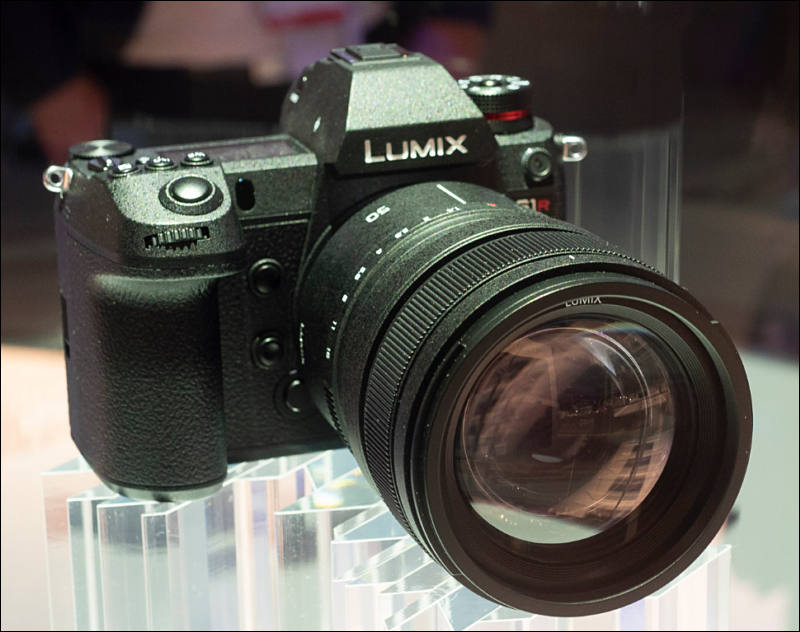
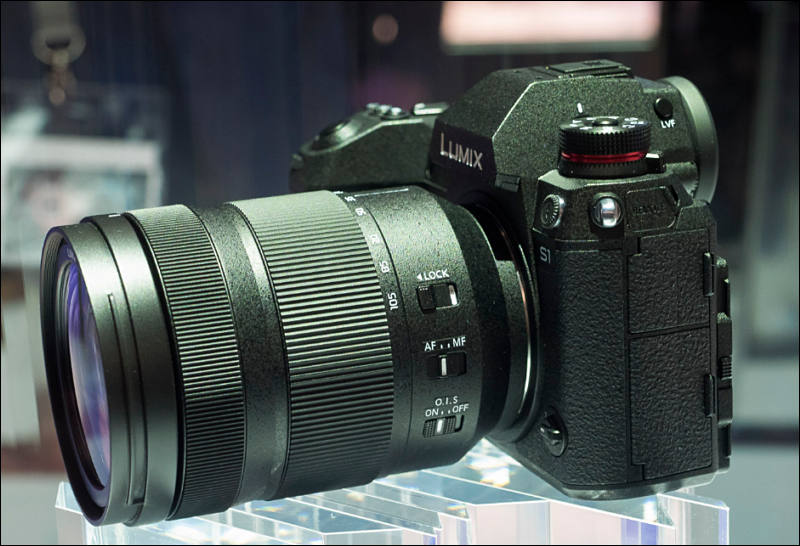
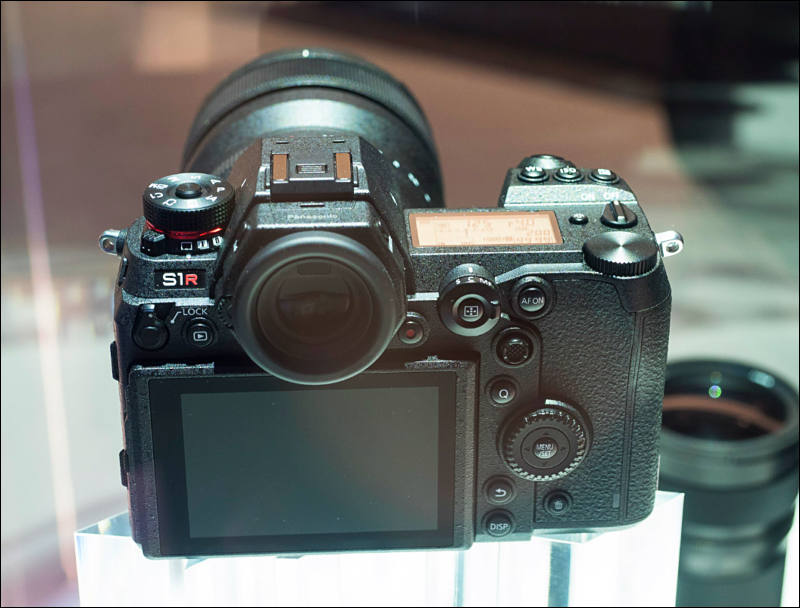
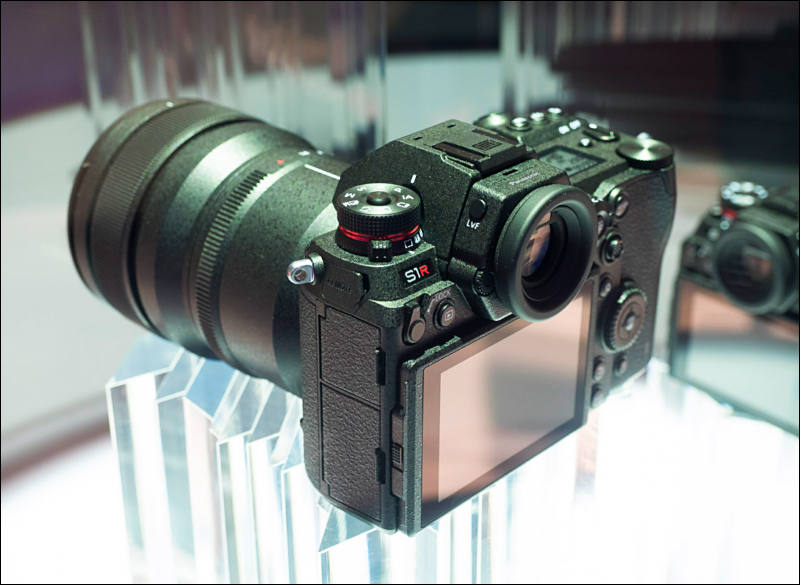
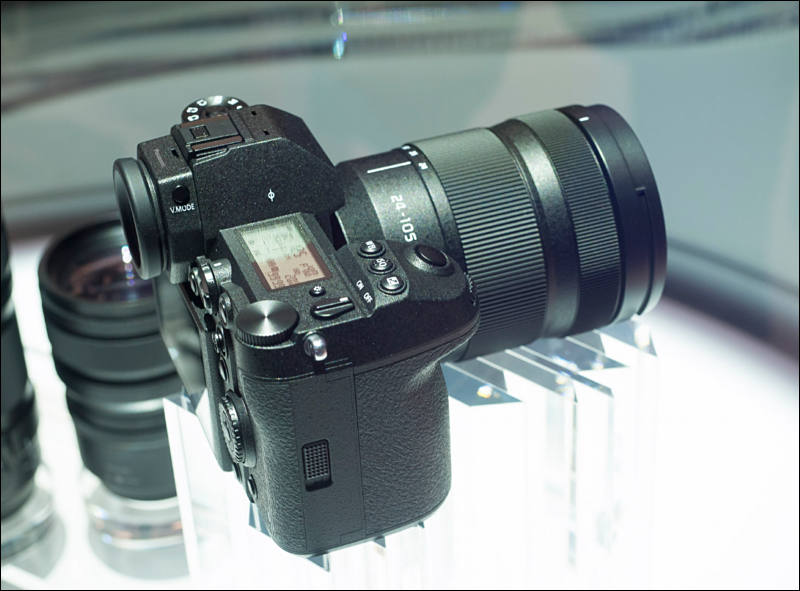
https://www.optyczne.pl/12894-news-Aparaty_i_obiektywy_Panasonic_LUMIX_S_zza_szyby.html

 sa4809.jpg800 x 632 - 72K
sa4809.jpg800 x 632 - 72K
 sa4810.jpg800 x 546 - 73K
sa4810.jpg800 x 546 - 73K
 sa4812.jpg800 x 608 - 65K
sa4812.jpg800 x 608 - 65K
 sa4813.jpg800 x 585 - 62K
sa4813.jpg800 x 585 - 62K
 sa4811.jpg800 x 591 - 60K
sa4811.jpg800 x 591 - 60K -
More body photos
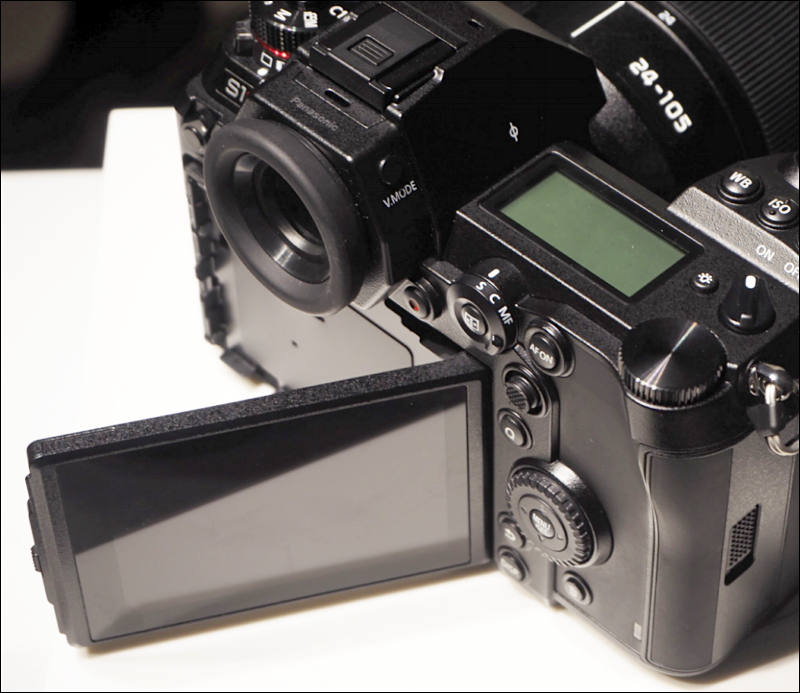
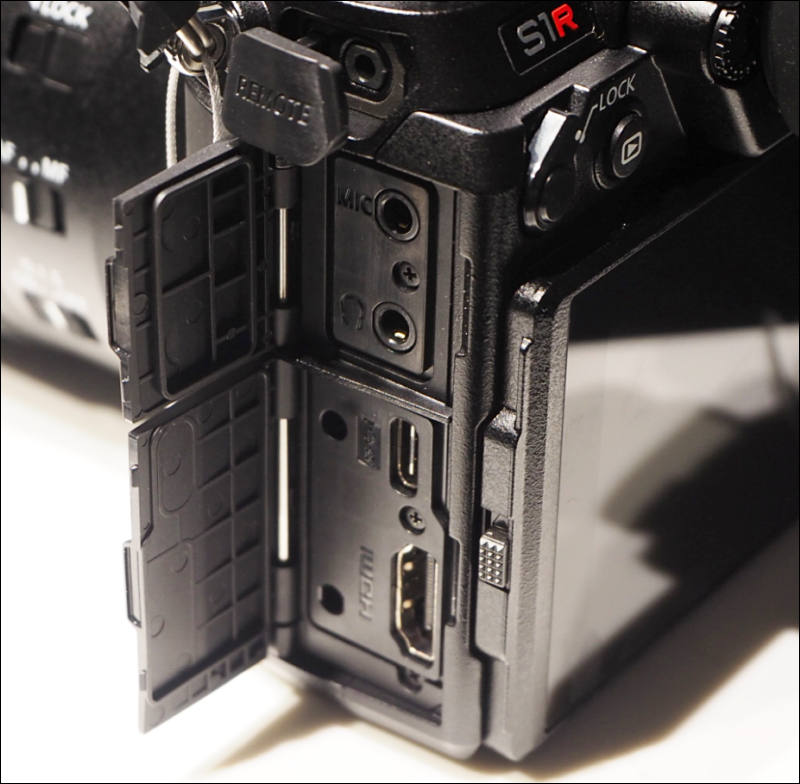
Look at the screen photo above - it is bad construction.
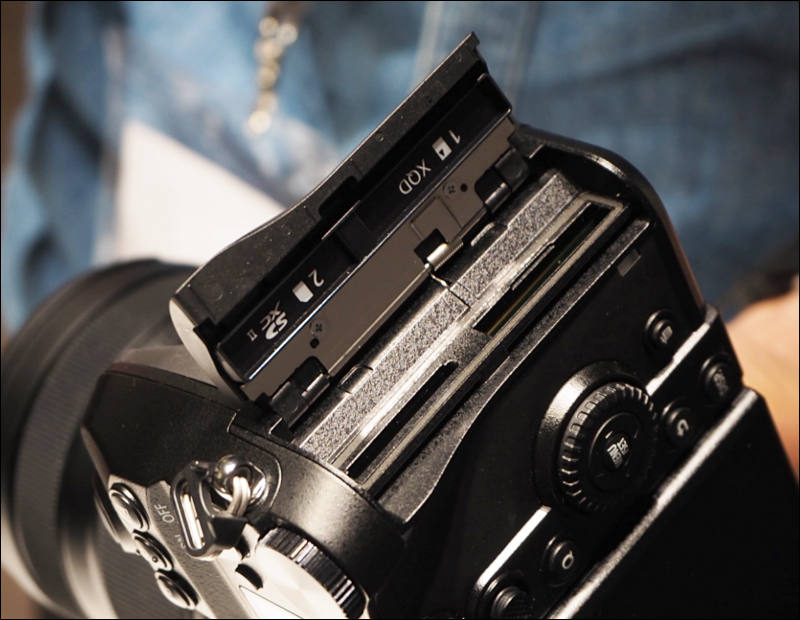
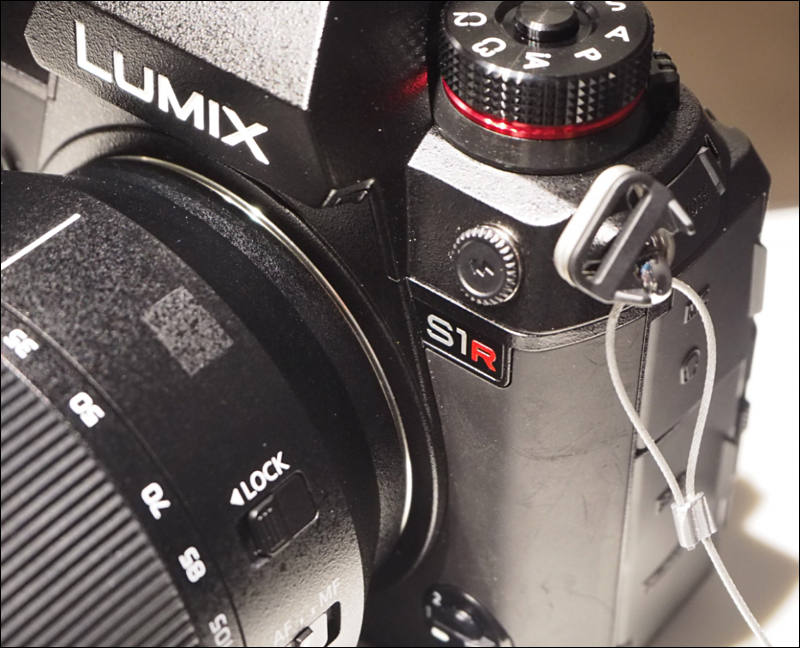
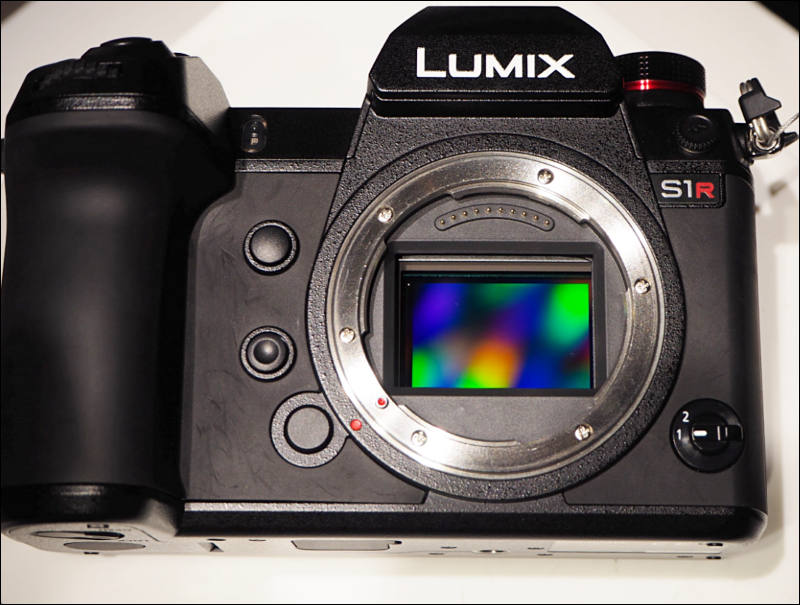

 sa4815.jpg800 x 693 - 69K
sa4815.jpg800 x 693 - 69K
 sa4816.jpg800 x 784 - 74K
sa4816.jpg800 x 784 - 74K
 sa4817.jpg800 x 620 - 71K
sa4817.jpg800 x 620 - 71K
 sa4818.jpg800 x 648 - 82K
sa4818.jpg800 x 648 - 82K
 sa4820.jpg800 x 605 - 74K
sa4820.jpg800 x 605 - 74K -
Why would they even move away from the existing GH5 screen design? It's totally fine and as flexible as anybody would realistically ever need.
-
Why would they even move away from the existing GH5 screen design? It's totally fine and as flexible as anybody would realistically ever need.
Such design change, for example, can be required due to agreement with Sony.
Or, much more probable, due to stupidity and attempts to copy Sony and Fujifilm that are now widespread in Panasonic.
-
The Leica by Lumix.
-
Full size HDMI port, USB-C, I'm liking this
-
Cheapest 3.5mm connectors, and HDMI + USB-C soldered to main board with cost of replacement in around $1000 ballpark.
Yes, something to like.. just not by users.
Actually all of the camera manufacturers show you utter disrespect.
-
@ eatstoomuchjam - I actually prefer the non-articulating screen for photography. When holding at waist level, chest level, or above my head, it's awkward if the screen is off to one side. The only use that really needs a fully articulating screen is vlogging. I use my Panasonic G6 for that. I doubt that resolutions higher than 1080 offer any advantage for the task.
-
They do. I capture in 4k pretty much all the time - even if you plan to deliver in 1080, the option to reframe in post is nice.
I could see the screen being to the side being awkward for still photos.
-
Sankei reported that the Panasonic S1R price could be around 500,000 yen which is close to $4,500.
Nice.
-
- 47.3 million pixels Full size sensor - Low pass filter less
- 5-axis hand vibration reduction within the body with 5.5 steps of effect
- Dual IS 2 with 6 stages of effect
- 4K 60p / 50p video
- Sequential shooting performance: 9 frames / second (AFS), 6 frames / second (AFC)
- 6K photo at 30 frames per second and 4K photo mode at 60 frames / sec
- 5.76 million dot EVF
- The finder magnification can be adjusted from 0.78 times to 0.74 times or 0.7 times
- Movable rear liquid crystal with 2.1 million dots
- Dustproof - Drip-proof - Low temperature-10 °
- Picture of 187 million pixels (16,736 x 11, 168) can be created using high resolution mode
- Advanced Artificial Intelligence Technology Detecting Humans, Cats, Dogs and Birds
- Size: 148.9 x 110.0 x 96.7 mm
- Weight: 898 g
- Overseas price: Body 3, 399 GBP, lens kit 4, 199 GBP
- $3699 in the USA
-
All UK prices
- Panasonic S1R Body - £3399
- Panasonic S1R Body and grip - £3548
- Panasonic S1R Body and 24-105m F4 lens - £4199
- Panasonic S1R Body and 24-105m F4 lens and battery grip - £4348
- Panasonic S1R Body and 70-200m F4 lens - £4448
- Panasonic S1R Body and 50mm F1.4 lens - £5548
-
Samples

https://www.dpreview.com/sample-galleries/9045823839/panasonic-s1r-pre-production-sample-gallery/

 sa6747.jpg800 x 533 - 99K
sa6747.jpg800 x 533 - 99K -
PR
After the development announcement at Photokina 2018, Panasonic is now proud to introduce the full specifications of its long-awaited first full-frame Digital Single Lens Mirrorless cameras, the LUMIX S1R and S1, with a 35mm full-frame CMOS sensor. The new cameras are based on the L-Mount standard, which boasts a well-balanced, large inner diameter and compact dimensions for a flange focus to realize optimum size and performance as a mirrorless camera system.
The LUMIX S Series aims for unprecedented image quality with high resolution, rich gradation and superior color reproduction. A high-speed, high-precision AF system based on advanced control technology over the lens, the sensor, and the new Venus Engine enable the user to capture the target in sharp focus without fail. The LUMIX S Series also boasts industry-leading video recording performance (4K 60p/50p*1), intuitive control, a rugged design for heavy field use, durability, and expandability.
The LUMIX S1R integrates a 47.3-megapixel full-frame CMOS sensor (36mm x 24mm), which gives it the industry's highest level of resolution in the full-frame mirrorless cameras*2, to pursue the ultimate power of expression. In addition to the precise reproduction capability in detail, this sensor achieves a high S/N ratio by taking advantage of its high light-condensing efficiency despite the large number of pixels. The LUMIX S1R features a High Resolution mode for the first time as a mirrorless full-frame camera to enable 187-megapixel ultra-high precision photo shooting.
The LUMIX S1 comes with a 24.2-megapixel full-frame CMOS sensor (35.6mm x 23.8mm) that provides a wide dynamic range and excellent performance at high sensitivity in addition to a natural yet sharp image description thanks to sufficient light condensation per pixel. The LUMIX S1 supports professional use in videography by taking advantage of the stunning expression performance that a full-frame camera can offer. It records smooth 4K 60p video and enables full-pixel readout of signals in 4K 30p/25p to save truly beautiful footage.
Furthermore, the LUMIX S1 will comply with 4:2:2 10-bit 4K 30p/25p internal video recording and 4K 60p HDMI output as well as V-Log, with a software upgrade key (to be sold separately) following soon in 2019.
Panasonic's advanced Contrast AF system with DFD technology has evolved through the development of numerous mirrorless cameras to make the AF system of the LUMIX S1R/S1 even more practical. It achieves not only the industry's fastest level of focusing speed but also a tracking performance that is made possible by the adoption of advanced AI technology that accurately recognizes moving target subjects. The LUMIX S1R/S1 incorporates a Body I.S. (Image Stabilizer) to effectively compensate for the hand-shake movement. Combining the Body I.S.(5-axis) and the O.I.S. (Optical Image Stabilizer, 2-axis) in the LUMIX S Series lenses, the Dual I.S. 2*3boasts even more powerful compensates for virtually any types of blur. Equipped with a high-resolution Real View Finder, triaxial tilt rear monitor and high performance shutter unit with high durability, the rugged design LUMIX S1R/S1 provides the professional photographers with high reliability.
Drawing on the vast expertise of the L-Mount Alliance with Leica Camera and Sigma, various interchangeable lenses are available for the LUMIX S Series. On the other hand, the LUMIX PRO service*4 has also launched to support professional work globally.
As a pioneer of the Digital Single Lens Mirrorless camera, Panasonic has pursued innovations in technology under the vision of "Changing Photography." Crystallizing all these digital and optical technologies, Panasonic is committed to introducing an unparalleled full-frame camera system without compromise for professional photographers and videographers.
High picture quality made possible by the first LUMIX full-frame mirrorless camera Unprecedented picture quality and high descriptive performance LUMIX S1R
The LUMIX S1R incorporates a new 47.3-megapixel CMOS sensor without LPF (Low Pass Filter) to realize high resolution and descriptive performance. This sensor adopts an aspherical lens for the on-chip micro lens to enhance light condensation. Together with the optimum design to concentrate more incoming light onto the photodiode, it achieves both high resolution and highly efficient light condensation performance. This results in the realization of the industry's highest level of 47.3-megapixel resolution* in the full-frame mirrorless cameras at high S/N ratio and maximum ISO 25600 high sensitivity. The large amount of digital signals is processed by the new high-speed, high-performance image processor Venus Engine to render images with breathtaking description in both photo and video.
High image quality, high sensitivity performance LUMIX S1
The LUMIX S1 employs a 24.2-megapixel CMOS sensor. The new Venus Engine, which is exclusively tuned for the full-frame camera, and its Multipixel Luminance Generation and Intelligent Detail Processing realize natural, high-resolution expression while suppressing color moiré. Three-dimensional color control improves the color reproduction of both bright and shadow areas. This results in natural, true-to-life images from low to high sensitivity. Taking advantage of sufficient light condensation, the LUMIX S1 boasts a wide dynamic range and reproduces sharp images with exceptional clarity. Noise is minimized even when shot at maximum ISO 51200 high sensitivity. It is an ideal camera to use especially in low-light situations.
An AR coating applied on the sensor of both LUMIX S1R/S1 minimizes ghost and flare even in backlighting. In combination with the high-quality LUMIX S Series lenses based on the L-Mount, this further enhances the potential of the camera.
Plus, the LUMIX S1R/S1 integrates the Body I.S. (Image Stabilizer) for powerful handshake correction. Panasonic developed an algorithm that precisely calculates shake information acquired not only from a gyrosensor, but also from the image sensor and accelerometer sensor. This enables more accurate shake detection and compensation, making it possible to use a 5.5-stop slower shutter speed1. Combining the Body I.S. (5-axis) in the camera and the O.I.S. (Optical Image Stabilizer, 2-axis) in the LUMIX S Series lens, the 5-axis Dual I.S. 2 compensates for larger movements that were conventionally uncontrollable. Maximizing both O.I.S and B.I.S. is highly beneficial in telephoto shots and in adverse situations, such as in low-light or with one-handed shooting with a 6-stop slower shutter speed2. The 5-axis Dual I.S. 2 works for both photo and video recording, including 4K. The Body I.S. compensates for camera movement even when other L-Mount lenses without O.I.S. are used.
Taking full advantage of its high-resolution sensor, the LUMIX S1R/S1 provides a High Resolution mode that faithfully reproduces precise details to be saved as beautiful, highly realistic RAW images. Eight consecutive images are automatically shot while shifting the sensor using the Body I.S. (Image Stabilizer) mechanism and synthesized into a 187-megapixel equivalent (16,736 x 11,168-pixel) image for LUMIX S1R and 96-megapixel equivalent (12,000 x 8,000-pixel) image for LUMIX S1 by the new Venus Engine, which boasts high-speed signal processing. This mode is suitable for taking natural landscapes or fine arts with delicate details. This magnificently high resolution photo is ideal for landscape photography of stationary subjects using a tripod. However, it can also be used in situations where moving subjects are included in the scene, by switching the sub mode.
The HLG3 Photo mode is a whole new style of photo expression that Panasonic proposes. It provides a wider dynamic range to reproduce light and shadow with more natural contrast. The HLG Photos can also be produced as an HSP file4 with compressed high-brightness signals in stunning 8K resolution (7,680 x 4,320 in 16:9, with LUMIX S1R) or its full resolution (5,888 x 3,312, in 16:9, with LUMIX S1) in addition to JPEG/RAW files. It excels in the expression of lights, such as sparkling starlight or glaring sunlight. The user can playback these vibrant images on the latest Panasonic HLG-compliant 4KTV via HDMI cable connection or other HLG-compliant devices. It is also ideal for photo presentations by photographers.
The high-precision shutter unit offers the highest shutter speed at a maximum 1/8000 second to capture spur-of-the-moment, fast moving subjects and to use a high-speed lens with a fully open aperture even outdoors for impressive defocusing. The external flash can be synchronized with the industry's fastest shutter speed of a maximum 1/320 second.
High-speed, high-precision AF system LUMIX S1R LUMIX S1
Panasonic has achieved a high-speed AF with its advanced control technology over the major devices - lens, sensor and imaging engine. The lens and sensor communicate at a maximum 480 fps. Combining the Contrast AF with DFD technology, the LUMIX S1R/S1 realizes an ultra-high-speed, high-precision AF of approximately 0.08 sec1. The LUMIX S1R/S1 also boasts high speed burst shooting at 9 fps (AFS) or 6 fps (AFC). With its high subject tracking performance, the LUMIX S1R/S1 never loses the target subject. As a camera that excels in low-light shooting, the LUMIX S1R/S1 boasts -6EV2 luminance detection performance with Low Light AF thanks to the higher sensitivity and optimized tuning of the sensor. The face/eye detection technology makes it possible to capture people in crisp focus, the Eye AF even detects the pupil of the eye and precisely focuses on it for impressive portrait shooting. The LUMIX S1R/S1 also incorporates advanced AI technology that detects specific subjects - humans and fast-moving animals, including dogs, cats and birds. The camera keeps tracking these subjects even when they turn their back to the camera.
For more continuous burst shooting, 6K PHOTO*3 makes it possible to capture unmissable moments at 30 fps by extracting the frame with the best timing out of a 6K burst file (in 4:3 or 3:2 aspect ratio) to save as an approximate 18-megapixel equivalent high resolution photo. The 4K PHOTO enables 60-fps high-speed captures in approximate 8-megapixel equivalent resolution. In 6K PHOTO /4K PHOTO, three exclusive modes can be chosen from depending on the situation; 6K Burst/4K Burst, 6K Burst (Start/Stop)/4K Burst (Start/Stop) and 6K Pre-burst/4K Pre-burst. Users can choose the most suitable burst shooting mode in addition to the regular consecutive shooting mode in full resolution depending on the situation.
3. Operability from ingenuity for intuitive control LUMIX S1R LUMIX S1
The LVF (Live View Finder) is the key factor for completing the ultra-high-speed response of the camera. The LUMIX S1R/S1 has the largest level of Real View Finder which boasts the world's highest 5,760k-dot resolution.* The 0.78x magnification ratio can be switched to 0.7x or 0.74x according to the shooting situation. Adoption of a high-speed, high-precision OLED (Organic Light-Emitting Diode) for the LVF achieves smooth display at 60 fps/120 fps (switchable) and high-speed response with minimum time lag of less than 0.005 sec as well as 10,000:1 high contrast for exceptional visibility. With minimum distortion and high optical performance, this Real View Finder provides a natural view as seen with the naked eye. It is always sharp and clear from the center all the way to the corners.
The 2,100K-dot high resolution monitor in 3:2 aspect ratio has adopted a triaxial tilt moving element to secure both durability and operational ease. It also has a touch control system. Live View Boost is another practical feature that makes it possible to check the composition even in total darkness by boosting the sensitivity just for live view. It also incorporates a night mode that provides mild backlighting. It lets the user watch the subject comfortably even after viewing the monitor in a dark situation for a long time. The LUMIX S1R/S1 includes a largest-in-class Status LCD on the top, allowing users to check the settings at a glance.
To make the camera just like a part of the photographer's body, the LUMIX S1R/S1 provides a firm grip, making it easy to hold for long periods. The control buttons and dials are located based on an ergonomic study to enable the user to concentrate on shooting. The adoption of an 8-directional joystick and refined UI (User Interface) also supports quick operation during shooting. In addition, illuminated buttons can be of help in low-light situations. An operation lock lever prevents unintentional operation, and the user can choose which operation to lock.\
4. Rugged design, reliability and expandability LUMIX S1R LUMIX S1
To be tough enough to withstand heavy field use, the main structure is composed of a magnesium alloy full die-cast front/rear frame. Robust construction and a sealing for every joint, dial, and button make the LUMIX S1R/S1 not only splash resistant* and dust resistant,* but also freeze resistant down to -10 degrees Centigrade. The shutter unit is also durable for approximately 400,000 cycles.
The LUMIX S1R/S1 is equipped with a double memory card slot compatible with SD (UHS-II) or XQD memory cards for high-speed, high-capacity continuous data recording. Users can flexibly choose the recording method from Relay Recording, Backup Recording or Allocation Recording using the double slots. It will also be compatible with CFexpress in the near future. The 7.4-V 3,050 mAh high-capacity battery can be quickly charged via USB PD (USB Power Delivery) using the bundled USB3.1 Type-C cable. And it also realizes high-speed data transfer.
A variety of new accessories are available for the LUMIX S1R/S1, including Remote Shutter (DMW-RS2), Eyecup (DMW-EC6), Battery Grip (DMW-BGS1) and Battery Charger (DMW-BTC14). The Battery Charger also complies with USB PD and enables quick power charging in approximately 2 hours. The camera can be used while charging via this adaptor. The conventional External Flash (DMW-FL580L / FL360L / FL200L) can also be mounted on the LUMIX S Series cameras.
Outstanding video recording performance in a full-frame camera 4K 60p video recording for more creative freedom. LUMIX S1R The LUMIX S1R is a camera designed and developed to boast exceptional performance in photography, yet is capable of 4K 60p video recording. To elevate the video expression even more, a variety of effects are available for video recording.
Exceptional video recording performance for professional videographers LUMIX S1
The LUMIX S1 features outstanding video performance for professional videography with 4K 60p recording. It realizes a crop factor of 1.0x in 4K 30p/25p/24p (in 50 and 60fps IT IS CROP!), which means that the user can record video in the original viewing angle of the lens. There is no recording time limit for both 4K 30p/25p/24p and Full-HD video. Notably, the CMOS Sensor with high sensitivity on the LUMIX S1 achieves full-pixel readout for an excellent S/N ratio. The HDR (High Dynamic Range) video recording is available, which reproduces both the bright parts and dark parts of an image, making it look just like human eyes see it. The camera records video with a designated gamma curve compatible with ITU-R BT.2100, and you can now choose Hybrid Log Gamma (HLG) in Photo Style. The LUMIX S1 further expands its potential with a firmware update including 4:2:2 10-bit 4K 30p internal video recording and 4K 60p/50p HDMI output as well as V-Log, with a Software Upgrade Key (to be sold separately) following soon in 2019.
As a camera from Panasonic that has been overstepping the limit of video performance in digital cameras, a host >of functions are available on the LUMIX S1R/S1. The High Speed Video lets users record slow motion video in 4K (maximum 60 fps and FHD (maximum 180 fps).
For the terminal, an HDMI Type A is provided. Plus, a cable lock holder for the HDMI cable is included in the LUMIX S1R/S1 to prevent unplugging trouble on location. LINE input is also supported by a 3.5-mm microphone jack. This makes it possible to input sounds from an external audio device, for more efficient video production. A 3.5-mm headphone jack is also available. In addition, it complies with the Microphone Adaptor DMW-XLR1 (sold separately), which is a plug-in type adaptor for an XLR microphone to record high-quality stereo sound. It is ideal for lip-sync recording. Dedicated switches allow direct, quick control. MIC, LINE and CONDENSER MICROPHONES are switchable.
Recording is maximum 15 minutes in 4K60p.
Maximum 29 minutes 59 seconds in 4K60p - Panasonic have BOTH this claims in PR.
When the ambient temperature is high or continuous recording is performed, the camera may stop the recording to protect itself. Wait until the camera cools down.
Howdy, Stranger!
It looks like you're new here. If you want to get involved, click one of these buttons!
Categories
- Topics List23,992
- Blog5,725
- General and News1,354
- Hacks and Patches1,153
- ↳ Top Settings33
- ↳ Beginners256
- ↳ Archives402
- ↳ Hacks News and Development56
- Cameras2,367
- ↳ Panasonic995
- ↳ Canon118
- ↳ Sony156
- ↳ Nikon96
- ↳ Pentax and Samsung70
- ↳ Olympus and Fujifilm101
- ↳ Compacts and Camcorders300
- ↳ Smartphones for video97
- ↳ Pro Video Cameras191
- ↳ BlackMagic and other raw cameras116
- Skill1,960
- ↳ Business and distribution66
- ↳ Preparation, scripts and legal38
- ↳ Art149
- ↳ Import, Convert, Exporting291
- ↳ Editors191
- ↳ Effects and stunts115
- ↳ Color grading197
- ↳ Sound and Music280
- ↳ Lighting96
- ↳ Software and storage tips266
- Gear5,420
- ↳ Filters, Adapters, Matte boxes344
- ↳ Lenses1,582
- ↳ Follow focus and gears93
- ↳ Sound499
- ↳ Lighting gear314
- ↳ Camera movement230
- ↳ Gimbals and copters302
- ↳ Rigs and related stuff273
- ↳ Power solutions83
- ↳ Monitors and viewfinders340
- ↳ Tripods and fluid heads139
- ↳ Storage286
- ↳ Computers and studio gear560
- ↳ VR and 3D248
- Showcase1,859
- Marketplace2,834
- Offtopic1,320


